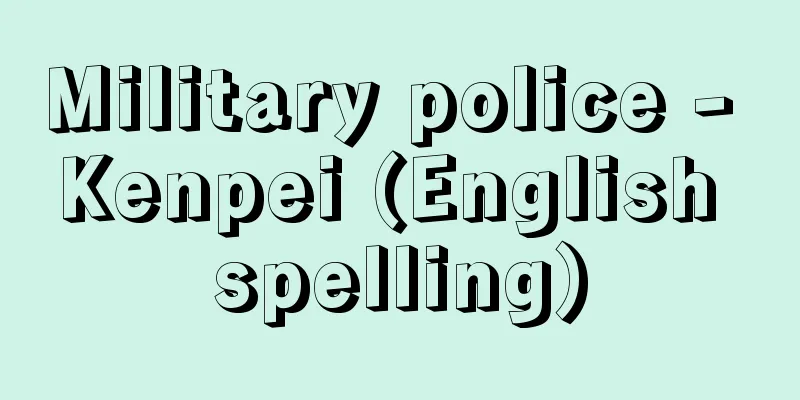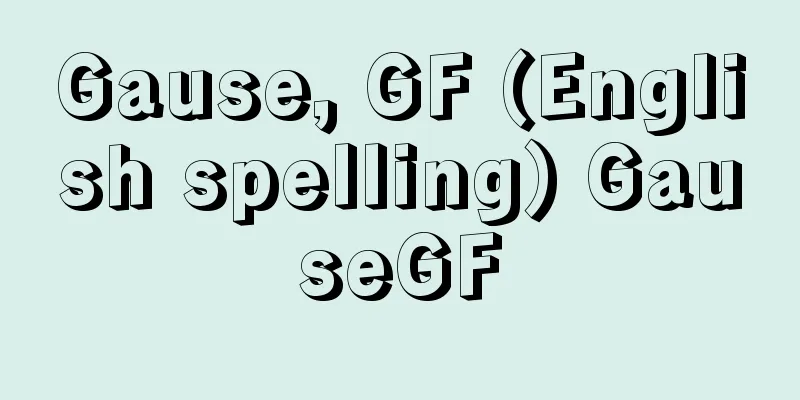Military police - Kenpei (English spelling)

|
The gendarmerie is a branch of the military whose main task is to maintain law and order within the military, and is responsible for the judicial and administrative police functions related to the military. In general, their main duties are to prevent, investigate, and arrest crimes committed by military personnel, to manage and operate barracks, and to protect military facilities, but in some countries they also control traffic and engage in counterintelligence activities, and may participate in combat as infantry if necessary. The history of the gendarmerie is long, and it is said that it existed at the time of Alexander the Great's great expedition, but the gendarmerie system in modern countries dates back to the Middle Ages in Europe. In the Middle Ages, military personnel who performed the duties of the gendarmerie were gendarmerie officers called provosts. Usually, gendarmerie officers were part-time officers who commanded provost guards, which were made up of soldiers selected temporarily, but there were already a few permanent gendarmerie officers. In the UK, the head of the Gendarmerie is the Provost Marshal, the oldest official position in the British military. Its origins can be traced back to the 11th century, but the most reliable record is that Henry VIII appointed a Gendarmerie in 1511. Since then, the Gendarmerie has mainly maintained order in the military and protected military forces, but its duties have diversified as the role of the military has changed. The Mounted Gendarmerie was established in 1877, and the Infantry Gendarmerie in 1885, and the two were merged in 1926. After World War II, three Gendarmerie corps were organized to protect important air defense points, control traffic, and conduct special investigations, and were given the title "Royal" as a reward for their activities during the war. In France, there is a Gendarmerie called the Gendarmerie, which follows the tradition of the Gendarmes, a select group of soldiers from the Middle Ages. Russia established the Gendarmerie in the 17th century during the era of Imperial Russia, but it was replaced by the Gendarmerie in the early 19th century and abolished with the Russian Revolution of 1917. Currently, there is no independent Gendarmerie, and it is said that the functions of the gendarmerie are fulfilled by the Home Guard and the Border Guard, both of which are part of the Ministry of Internal Affairs. Many countries outside continental Europe have adopted military police systems from the United Kingdom and the United States. The British Commonwealth countries modelled theirs on the British system, while the Self-Defense Forces of Latin America and Japan are modelled on the American system. British and American military police emphasize that they are soldiers rather than police officers, which distinguishes them from the French Gendarmerie, which is more deeply involved in public safety. [Kameno Masao] JapanOne of the seven military branches of the former Japanese Army. In March 1881 (Meiji 14), the Gendarmerie Ordinance, which was modeled on the French Gendarmerie system, stipulated that the role of the Gendarmerie was "under the supervision of the Minister of the Army, and to be in charge of military police as well as administrative and judicial police" (Article 1). Its main duties were investigating crimes within the military and ideological control, but it also served as military administrative police and military judicial police, subordinate to the three ministries of the Navy, the Interior, and the Justice Department. The military administrative police were intended to assist in the execution of military administration and supreme command, and their duties covered a wide range of areas, including the protection of military interests, the enforcement of laws related to military ports, important ports, conscription, railways, service, conscription, martial law, and the maintenance of military discipline and morals. The military judicial police were responsible for investigating crimes committed by military personnel and civilian employees, and the execution of warrants. At the time of its establishment, the number of military police was about 1,600, but in the 1890s, the number was increased significantly, and as a result, military police were deployed to every city, town, and village in the country. At the same time, because the legal restrictions on the exercise of military police powers were unclear, the military police gradually expanded their scope of activities to include the area of maintaining public security, which was the responsibility of the general police. For example, in the Meiji period, the military police were deployed in the election riots (1892), the Ashio copper mine pollution incident (1900, 1907), and the Hibiya arson incident (1905), and in the Taisho period, the military police were deployed in the constitutional protection movement (1912), the rice riots (1918), and the Yahata ironworks strike (1920), and took the lead in suppressing workers and the general public. On the other hand, they also demonstrated their power as a violent means of suppressing colonial peoples such as Korea and Taiwan. With the rise of social movements from the end of the Taisho period to the Showa period, the military police took on the important task of ideological control in order to prevent the military from becoming communist and to cut off its influence on the general public. In May 1924 (Taisho 13), Army Minister Ugaki Kazushige addressed a meeting of military police chiefs, saying, "The military police should make the main effort to thoroughly investigate and prevent various plans that threaten the existence of the military through both peacetime and war strategies, and this is the main focus of the military police." Here, the military police were expected to play an active role in security measures from the perspective of a national police organization. Furthermore, as the wartime system in Japan was strengthened with the full-scale war between Japan and China, the military police became more interested in military secrets and counterintelligence. The military police, which numbered 26,000 at the time of Japan's defeat, were disbanded when the military was disbanded. In the Self-Defense Forces, the duties of a military police officer roughly correspond to this, and are equivalent to the duties of a judicial police officer in criminal proceedings. [Kokatsu Atsushi] [Reference items] | |Source: Shogakukan Encyclopedia Nipponica About Encyclopedia Nipponica Information | Legend |
|
軍隊内の法秩序維持をおもな任務とする軍隊の兵科の一つで、軍に関する司法・行政警察機能を担う。一般的には、軍人の犯罪を防止し、捜査し、逮捕すること、営倉を管理・運営すること、および軍事施設を防護することが業務の中心であるが、国によっては交通の統制や対諜報(ちょうほう)活動を行い、必要に応じて歩兵として戦闘に参加することもある。憲兵の歴史は古く、アレクサンドロス大王の大遠征当時すでに存在したといわれるが、現代の各国の憲兵制度にかかわりをもつのはヨーロッパ中世のものである。中世においては、憲兵の任務を行う軍人はプロボーprovostとよばれる憲兵将校であった。通常、憲兵将校は、臨時に選抜された兵士で編成される憲兵隊provost guardを指揮する非常勤の任務であったが、常任の憲兵将校も少数ながらすでに存在していた。 イギリスにおいては、憲兵隊の長はプロボー・マーシャルprovost marshalという憲兵司令官で、イギリス軍隊最古の官職とされている。その起源は11世紀にまでさかのぼることができるが、確実なものとしては、1511年にヘンリー8世が憲兵司令官を任命した記録が残っている。それ以来、憲兵はおもに軍の秩序維持と軍機の保護にあたってきたが、軍隊の役割の変化に伴いその任務も多様化した。1877年に騎馬憲兵隊が、85年には歩兵憲兵隊が創設され、1926年に双方が統合された。第二次世界大戦以降は、要防空重要地点の防御、交通の統制、特殊捜査を担当する三つの憲兵隊が組織され、大戦中の活動に対する報償として「ローヤル」の呼称が与えられている。フランスには、中世の選抜された兵士による近衛(このえ)騎兵(ジャンダルム)の伝統を引くジャンダルムリgendarmerieとよばれる憲兵隊がある。 ロシアでは、帝政ロシア時代の17世紀に憲兵隊が創設されたが、19世紀初めにジャンダルムリにかわり、1917年のロシア革命で廃止された。現在は独立した憲兵隊をもたず、内務省に所属する国内軍や国境警備隊などが憲兵の機能を果たしているといわれる。 ヨーロッパ大陸以外の多くの国では、イギリスおよびアメリカの憲兵制度を取り入れている。イギリス連邦諸国はイギリスの、ラテンアメリカ諸国および日本の自衛隊はアメリカの制度に倣ったものである。 英米の憲兵は、警察官であるよりも兵士であることを強調する。この点で、公共の安全により深く関与するフランスのジャンダルムリなどとは性格を異にする。 [亀野邁夫] 日本旧日本陸軍七兵科の一つ。1881年(明治14)3月、フランスの憲兵制度を模範にして制定された憲兵条例は、憲兵の役割を「陸軍大臣ノ管掌ニ属シ主トシテ軍事警察ヲ掌(つかさど)リ兼テ行政警察司法警察ヲ掌ル」(1条)と規定した。主要任務は軍隊内の犯罪調査、思想取締りなどにあったが、海軍・内務・司法の3省に兼任隷属して軍事行政警察、軍事司法警察としての役割も担った。軍事行政警察とは軍事行政や統帥(とうすい)権の執行の補助を目的とし、その内容は軍機保護、軍港・要港・徴兵・鉄道・服役・召集・戒厳などに関する法令の執行、軍紀・風紀の維持など広範囲にわたった。軍事司法警察とは軍人・軍属関係者の犯罪調査、令状の執行などの業務をさした。 創設当初憲兵は1600人程度であったが、1890年代に入ると大規模な増員が行われ、この結果憲兵は全国の市町村にまで配置されることになった。同時に、憲兵の権限行使に関する法的規制があいまいであったことから、憲兵はしだいに一般警察の管掌事項であった公安維持の領域にまで活動範囲を拡大していった。たとえば、明治時代には選挙騒擾(そうじょう)事件(1892)、足尾(あしお)銅山鉱毒事件(1900.1907)、日比谷(ひびや)焼打事件(1905)、大正時代には護憲運動(1912)、米騒動(1918)、八幡(やはた)製鉄所罷業(1920)などに憲兵が出動し、労働者・民衆鎮圧の先頭にたった。一方、朝鮮・台湾など植民地民族への暴力的抑圧装置としてもその威力を発揮した。 大正末期から昭和期にかけて社会運動の高揚に伴い、憲兵は軍隊赤化防止や、それの一般民衆への影響を断絶する目的で、思想取締りを重要な任務とするに至った。1924年(大正13)5月、陸軍大臣宇垣一成(うがきかずしげ)は、憲兵隊長会議の席上、「平戦両略ヲ通シ軍ノ存在ヲ危殆(きたい)ナラシムル各種ノ企画ニ対シ捜査警防ノ全キヲ期スルハ主トシテ憲兵ノ努力スヘキ所ニシテ軍事警察ノ主眼実ニ此(ここ)ニ在リ」と訓示した。ここでは憲兵が国家警察機関的立場から治安対策上積極的な役割を担うよう期待された。さらに日中戦争の全面化に伴い国内の戦時体制が強化されるにしたがって、憲兵は軍事機密や防諜(ぼうちょう)に強い関心を払うところとなった。敗戦時2万6000人を数えた憲兵は軍隊の解体とともに解散させられた。なお、自衛隊では警務官の職務がほぼこれに相当し、刑事訴訟上の司法警察職員の職務を相当する。 [纐纈 厚] [参照項目] | |出典 小学館 日本大百科全書(ニッポニカ)日本大百科全書(ニッポニカ)について 情報 | 凡例 |
Recommend
Aerodynamic center
…To make a canard aircraft aerodynamically stable...
Ano Reiko - Ano Reiko
Year of death: Enbun 4/Shohei 14.4.29 (1359.5.26) ...
Girth
In wooden buildings, a horizontal member used at t...
Békésy, G.von (English spelling)
...The former considered each hair cell to be a r...
Crimean War
A war fought between Russia and the allied forces...
Don't eat dogs - Inukuwazu
...This is because it was believed that dogs are ...
Kyorei - Kyorei
〘 noun 〙 A ceremony related to a misfortune. A cer...
Gabbro - Gaburo
Please see the "Gabbros" page. Source: ...
Anthropology
…Based on these achievements, the foundations of ...
Liedform - Liedform (English spelling) German
A musical form in Western music. Lied is a German...
Astrolabe - Asutororabe (English spelling) astrolabe
An astronomical observation device used in ancien...
No eddy - No whirlpool
…Therefore, rot F and div F represent the rotatio...
Goth
…It was born as a result of the development of Ro...
Kloos, Willem Johan Theodor
Born: May 6, 1859 in Amsterdam [died] March 31, 19...
Charles V - Charles
Son of Philip of Habsburg, he succeeded his matern...









